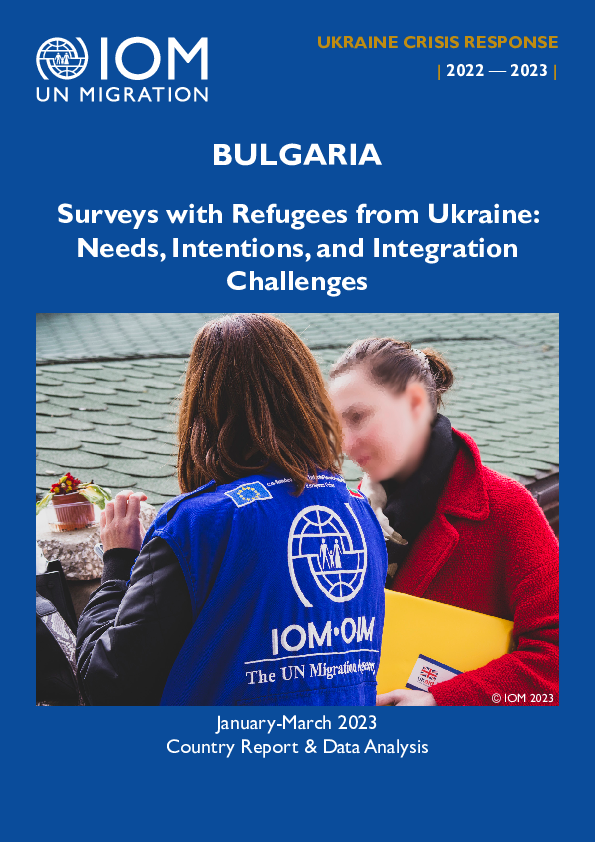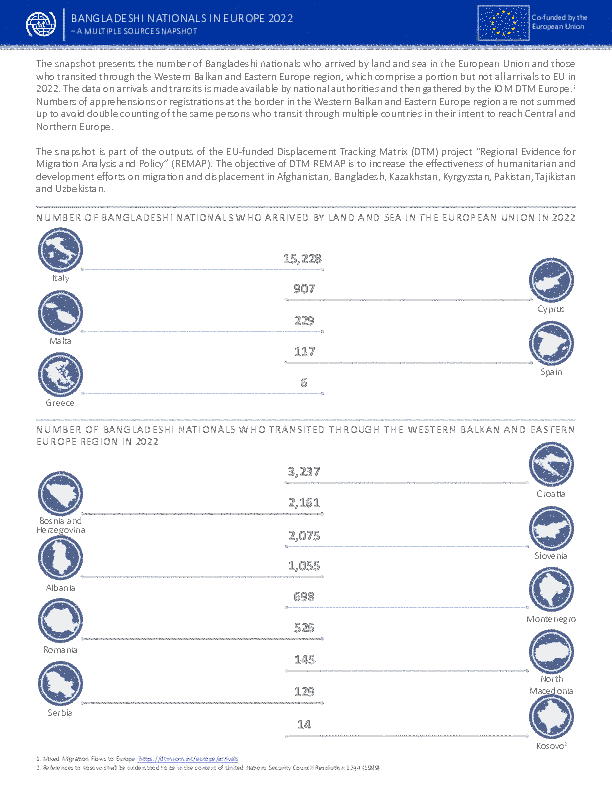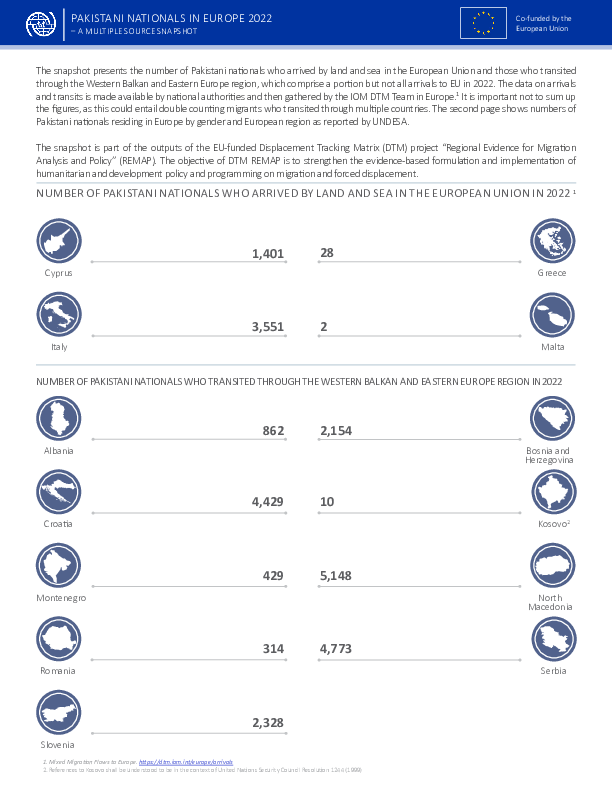-
Countries
-
Data and Analysis
-
Special Focus
-
Crisis Responses
Contact
DTM Yemen, iomyemendtm@iom.int
Location
Yemen
Activity
- Mobility Tracking
- Event Tracking
Period Covered
May 07 2023 -May 13 2023
From 1 January to 13 May 2023, IOM Yemen DTM tracked 3,186 households (HH) (19,116 Individuals) who experienced displacement at least once.
Between 7 and 13 May 2023, IOM Yemen DTM tracked 78 households (468 individuals) displaced at least once. The majority of people moved into/within the following governorates and districts:
- Ad Dali (31 HHs) – Qatabah (31 HHs) district. All displacements in the governorate were internal.
- Ma’rib (22 HHs) – Ma’rib City (10 HHs), Ma’rib (7 HHs), Harib (5 HHs) districts. Most displacements in the governorate originated from Ma’rib and Ibb.
- Al Hodeidah (14 HHs) – Hays (13 HHs), Al Khukhah (1 HH) districts. Most displacements in the governorate originated from Ta’iz.
- Ad Dali (31 HHs) – Qatabah (31 HHs) district.
- Ta’iz (21 HHs) – Maqbanah (17 HHs), Al Mawasit (3 HHs), Dimnat Khadir (1 HH) districts.
- Ma’rib (10 HHs) – Harib (10 HHs) district.
Population Groups
Survey Methodology
Unit of Analysis Or Observation
Type of Survey or Assessment
Keywords
Geographical Scope
Administrative boundaries with available data
The current dataset covers the following administrative boundaries

Contact
DTMLibya@iom.int
Language
English
Location
Libya
Snapshot Date
May 15 2023
Activity
- Other
This infographic provides valuable insights into the situation and vulnerabilities of Sudanese migrants in Libya. The information pertaining to migrants’ situation and vulnerabilities is based on quantitative individual interviews conducted by DTM Libya with 888 migrants in January and February 2023, unless stated otherwise. The migrant population figures are based on data collected via DTM Mobility Tracking through key informant interviews.
The snapshot presents the number of Pakistani nationals who arrived by land and sea in the European Union and those who transited through the Western Balkan and Eastern Europe region, which comprise a portion but not all arrivals to EU in 2022. The data on arrivals and transits is made available by national authorities and then gathered by the IOM DTM Team in Europe. It is important not to sum up the figures, as this could entail double counting migrants who transited through multiple countries. The second page shows numbers of Pakistani nationals residing in Europe by gender and European region as reported by UNDESA. The snapshot is part of the outputs of the EU-funded Displacement Tracking Matrix (DTM) project “Regional Evidence for Migration Analysis and Policy” (REMAP). The objective of DTM REMAP is to strengthen the evidence-based formulation and implementation of humanitarian and development policy and programming on migration and forced displacement.

Contact
DTM Europe, DTMMediterranean@iom.int
Language
English
Location
Slovakia
Period Covered
Jan 01 2023
Mar 31 2023
Activity
- Survey
This report is based on a survey of displacement patterns, needs and intentions conducted by IOM’s Displacement Tracking Matrix (DTM) in the 11 countries included in the Regional Response Plan for Ukraine in 2023: 6 countries neighbouring Ukraine – Belarus, Hungary, Poland, Republic of Moldova, Romania and Slovakia – and other 5 countries particularly impacted by the arrivals of refugees from Ukraine since the start of the war in February 2022 – Bulgaria, Czechia, Estonia, Latvia and Lithuania.
Slovakia - Key findings:
- Top oblasts of origin: Kharkivska (22%), Dnipropetrovska (11%), Donetska oblast (11%) and Kyiv city (11%)
- Intention to move: 84% have no intentions to move, 5% want to move to a different country (Top 3 destinations were: Czechia, Germany, Canada), 4% would like to get back to their region of origin in Ukraine.
- Education level: 50% completed tertiary, 7% post secondary and 32% upper secondary education.
- Employment status: 30% employed and 34% unemployed respondents
- Immediate needs: Financial support (49%), health services (47%), medicines (36%), support with employment (24%)
- Inclusion challenges: Financial issues (43%), employment opportunities (26%), language barriers (26%), long term housing (20%)

Contact
DTM Europe, DTMMediterranean@iom.int
Language
English
Location
Hungary
Period Covered
Jan 01 2023
Mar 31 2023
Activity
- Survey
This report is based on a survey of displacement patterns, needs and intentions conducted by IOM’s Displacement Tracking Matrix (DTM) in the 11 countries included in the Regional Response Plan for Ukraine in 2023: 6 countries neighbouring Ukraine – Belarus, Hungary, Poland, Republic of Moldova, Romania and Slovakia – and other 5 countries particularly impacted by the arrivals of refugees from Ukraine since the start of the war in February 2022 – Bulgaria, Czechia, Estonia, Latvia and Lithuania.
Hungary - Key findings:
- Top oblasts of origin: Kyiv City (19%), Zakarpatska (19%), Kharkivska (10%), Dnipropetrovska (10%), Odeska (7%), Zaporizka (5%).
- Intentions to move: no intentions to move (43%), move back to Ukraine (9%), move to another country (36%).
- Employment status: employed (18%), unemployed and looking for a job (7%), unemployed and not looking for a job (10%), and retired (9%).
- Top needs upon return: transportation (61%), information (43%), cash support (26%), job placement (13%).
- Top areas of assistance received: transportation support (27%), food (20%), accommodation support (17%).
- Top inclusion challenges: language (7%), financial issues (3%), lack of information (3%), housing (3%), services (2%).

Contact
DTM Europe, DTMMediterranean@iom.int
Language
English
Location
Bulgaria
Period Covered
Jan 01 2023
Jan 31 2023
Activity
- Survey
This report is based on a survey of displacement patterns, needs and intentions conducted by IOM’s Displacement Tracking Matrix (DTM) in the 11 countries included in the Regional Response Plan for Ukraine in 2023: 6 countries neighbouring Ukraine – Belarus, Hungary, Poland, Republic of Moldova, Romania and Slovakia – and other 5 countries particularly impacted by the arrivals of refugees from Ukraine since the start of the war in February 2022 – Bulgaria, Czechia, Estonia, Latvia and Lithuania.
Bulgaria - Key findings:
- Top oblasts of origin Odeska (15%), Zaporizka (14%), Dnipropetrovska (14%), Donetska (12%), Kharkivska (11%), Mykolaivska (10%).
- Intentions to move: no intention to move (84%), move back to place of origin in Ukraine (4%), to another country (0.4%).
- Employment status: employed (12%), unemployed and looking for a job (14%), unemployed and not looking for a job (16%), retired (31%).
- Top needs upon return: cash support (82%), medical needs (49%), information (47%), housing (42%).
- Top areas of assistance received: financial support (89%), vouchers (80%), food supplies (70%).
- Top inclusion challenges: language (10%), financial issues (10%), employment (4%), housing (3%), services (3%).

Contact
DTM Europe, DTMMediterranean@iom.int
Language
English
Location
Romania
Period Covered
Jan 01 2023
Mar 31 2023
Activity
- Survey
This report is based on a survey of displacement patterns, needs and intentions conducted by IOM’s Displacement Tracking Matrix (DTM) in the 11 countries included in the Regional Response Plan for Ukraine in 2023: 6 countries neighbouring Ukraine – Belarus, Hungary, Poland, Republic of Moldova, Romania and Slovakia – and other 5 countries particularly impacted by the arrivals of refugees from Ukraine since the start of the war in February 2022 – Bulgaria, Czechia, Estonia, Latvia and Lithuania.
Romania - Key findings:
- High inclusion rate: 61% registered to healthcare services, 86% applied to EU temporary protection, 91% of the UA children are enrolled in a school.
- Employment status: applied for a job (24%), employed (51%), unemployed and not looking for a job (45%).
- Main destination countries: 3% are transiting Romania with the top 3 destination countries: Lithuania, Germany and the UK.
- Intention to stay: yes (51%), already settled (31%), Ukrainian residence (10%), does not know (4%), no (3%).
- Top areas of assistance received*: accommodation (57%), financial services (56%), food supplies (56%) or sanitary supplies (44%).
- Top inclusion challenges: language (74%) employment (25%), medical services (12%), children schooling (10%).
- Main needs: financial support (57%), general information (51%), health services (50%), sanitary supplies (39%) and food supplies (36%).

Contact
DTM Europe, DTMMediterranean@iom.int
Language
English
Location
Republic of Moldova
Period Covered
Jan 01 2023
Mar 31 2023
Activity
- Survey
This report is based on a survey of displacement patterns, needs and intentions conducted by IOM’s Displacement Tracking Matrix (DTM) in the 11 countries included in the Regional Response Plan for Ukraine in 2023: 6 countries neighbouring Ukraine – Belarus, Hungary, Poland, Republic of Moldova, Romania and Slovakia – and other 5 countries particularly impacted by the arrivals of refugees from Ukraine since the start of the war in February 2022 – Bulgaria, Czechia, Estonia, Latvia and Lithuania.
Republic of Moldova - Key findings:
- Top oblasts of origin Odeska (25%), Vinnytska (17%), Mykolaivska (11%), Kyivska city (11%), Dnipropetrovska (6%), Kharkivska (4%).
- Intentions to move: settled or planning to settle in the Republic of Moldova (49%), transiting to another country (45%), mainly to Romania, Germany and Canada. Move back to place of origin in Ukraine (4%).
- Employment status: employed (4%), daily workers (2%), unemployed and looking for a job (23%), student (22%), maternity leave (9%).
- Top needs: cash support (41%), medicines (23%), personal hygiene items (19%), health services (14%), food (13%).
- Top areas of assistance received: food supplies (74%), personal hygiene items (66%), financial support (62%), clothes & shoes (30%).
- Main inclusion challenges: financial issues (37%), housing (23%), language (7%), hunger (4%).
- Women refugees: women travelling with children (78%), pregnant or lactating (7%).

Contact
DTM Europe, DTMMediterranean@iom.int, IOMDTMPoland@iom.int
Language
English
Location
Poland
Period Covered
Jan 01 2023
Mar 31 2023
Activity
- Survey
This report is based on a survey of displacement patterns, needs and intentions conducted by IOM’s Displacement Tracking Matrix (DTM) in the 11 countries included in the Regional Response Plan for Ukraine in 2023: 6 countries neighbouring Ukraine – Belarus, Hungary, Poland, Republic of Moldova, Romania and Slovakia – and other 5 countries particularly impacted by the arrivals of refugees from Ukraine since the start of the war in February 2022 – Bulgaria, Czechia, Estonia, Latvia and Lithuania.
Poland - Key findings:
- Top oblasts of origin: Kyiv City (11%), Vinnytska (10%), Ternopilska (9%), Kharkivska (8%), Dnipropetrovska (7%), Chernivetska (6%).
- Intentions to move: return to Ukraine (56%), no intention to move (39%), to another country (3%), where top three countries were Germany, Canada and Norway.
- Employment status: employed (28%), unemployed and not looking for a job (18%), unemployed and looking for a job (17%), retired (20%).
- Top needs: financial support (52%), health services (31%), medicines (29%), long-term accommodation (27%).
- Top areas of assistance among aid recipients:* food (92%), financial support (77%), personal hygiene (73%), clothes (65%), accommodation (63%).
- Top inclusion challenges: financial issues (43%), language (40%), employment (22%), housing (21%), school access (15%).

Contact
REMAPBD@iom.int
Language
English
Location
Bangladesh
Period Covered
Jan 01 2022
Dec 31 2022
Activity
- Flow Monitoring
The snapshot presents the number of Bangladeshi nationals who arrived by land and sea in the European Union and those who transited through the Western Balkan and Eastern Europe region, which comprise a portion but not all arrivals to EU in 2022. The data on arrivals and transits is made available by national authorities and then gathered by the IOM DTM Europe. Numbers of apprehensions or registrations at the border in the Western Balkan and Eastern Europe region are not summed up to avoid double counting of the same persons who transit through multiple countries in their intent to reach Central and Northern Europe. The snapshot is part of the outputs of the EU-funded Displacement Tracking Matrix (DTM) project “Regional Evidence for Migration Analysis and Policy” (REMAP). The objective of DTM REMAP is to increase the effectiveness of humanitarian and development efforts on migration and displacement in Afghanistan, Bangladesh, Kazakhstan, Kyrgyzstan, Pakistan, Tajikistan and Uzbekistan.
